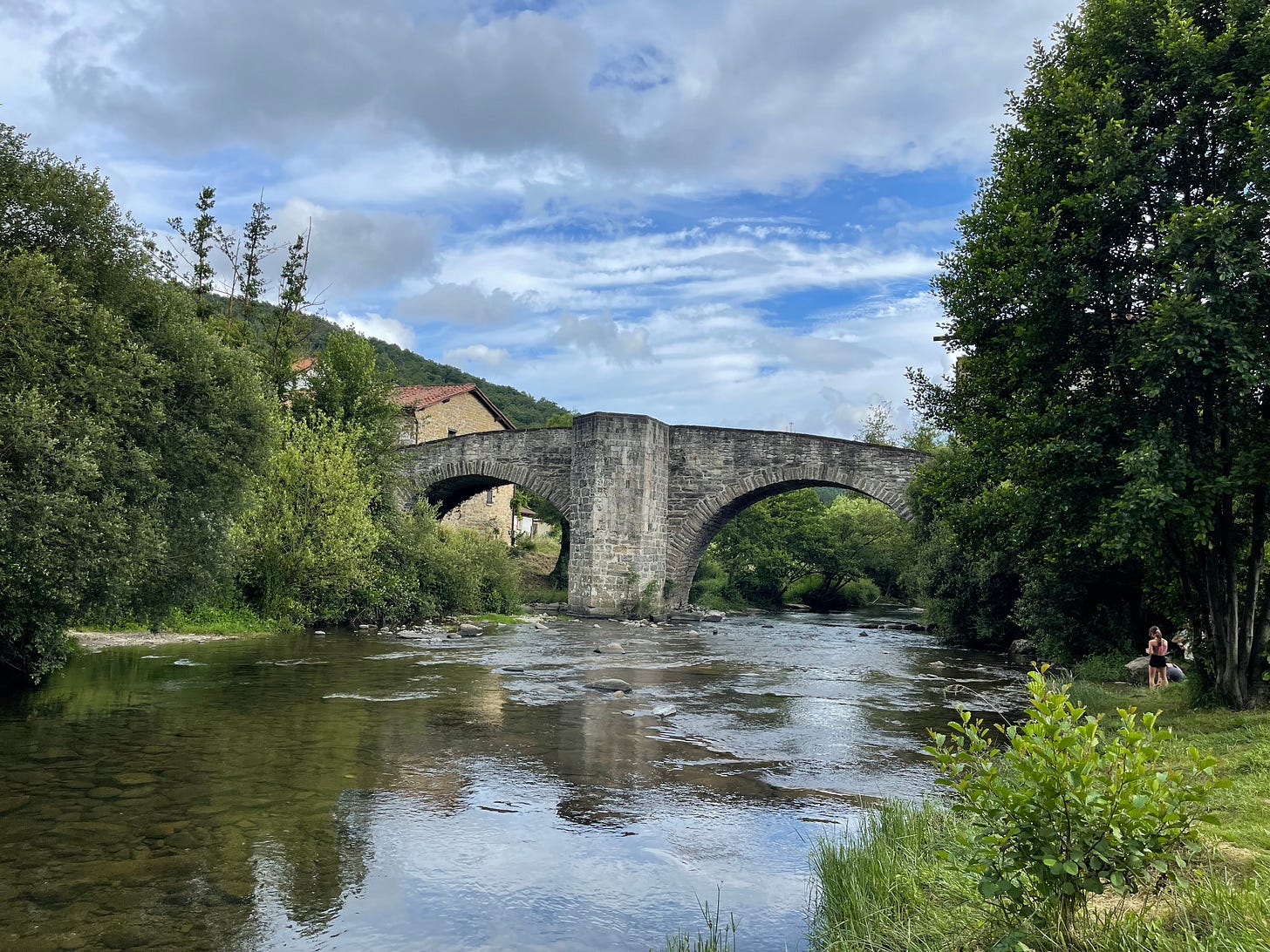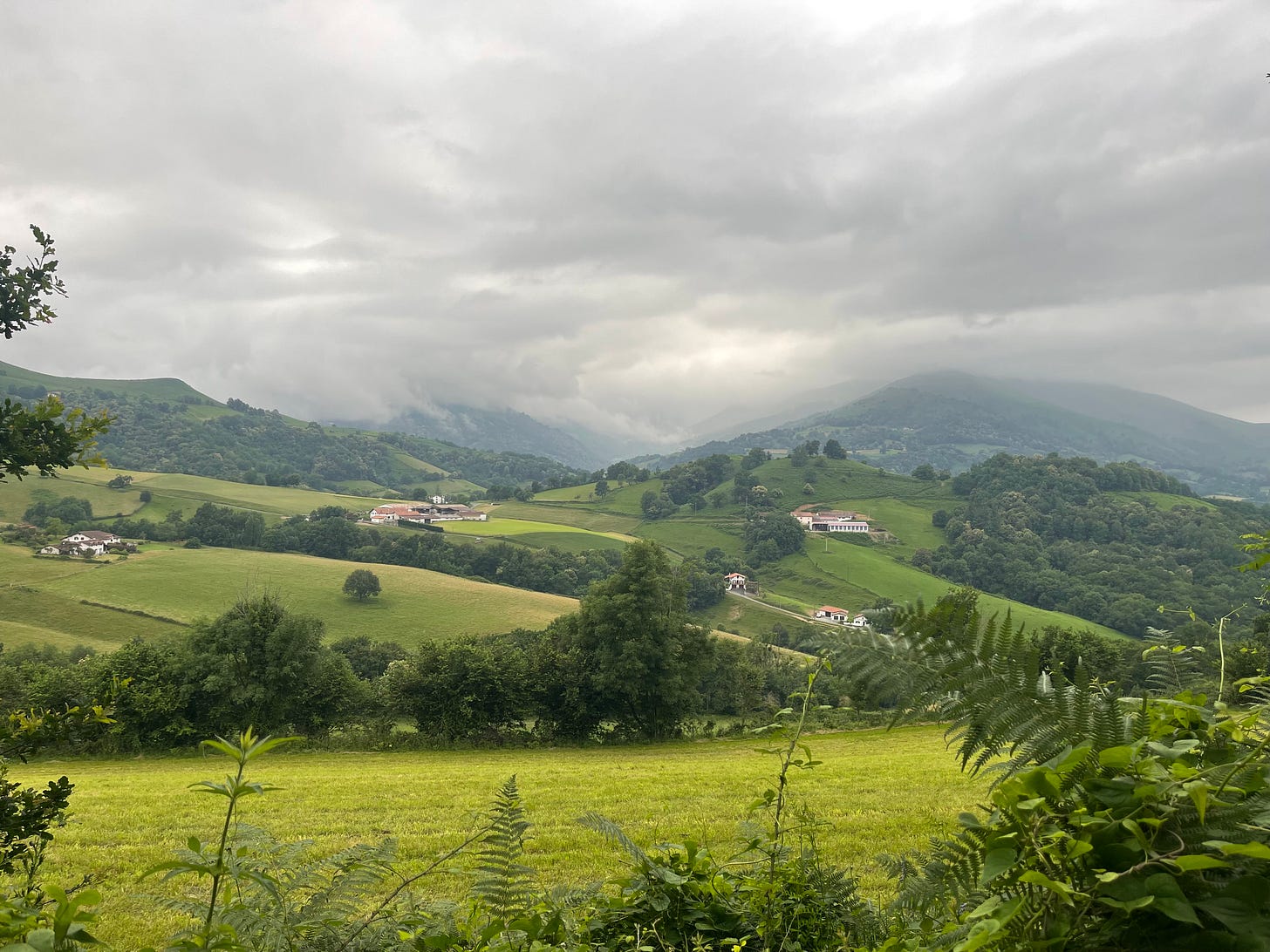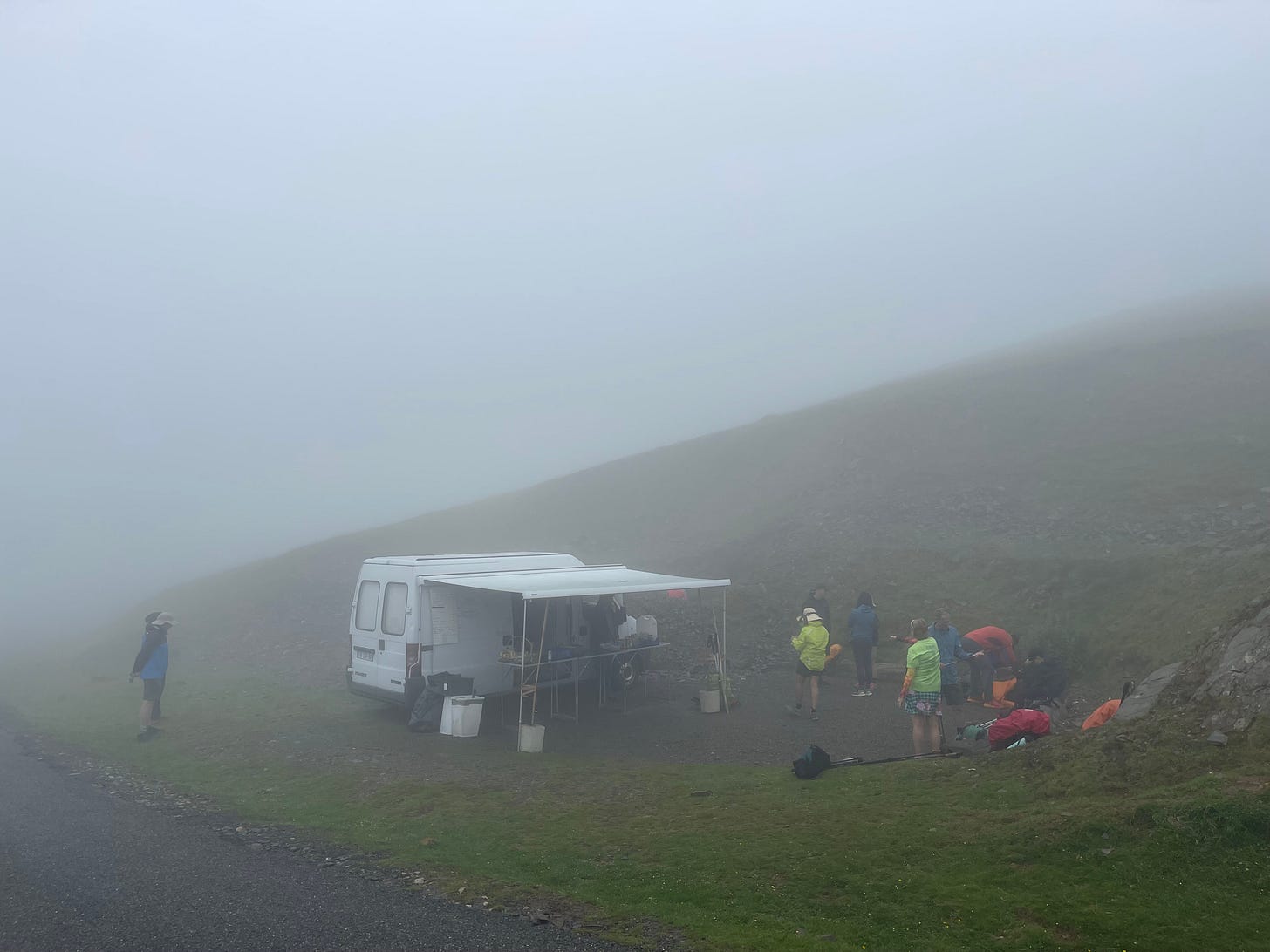It is nearly 1 a.m. in the dimly lit living room in a hostel in Zubiri, a small and unremarkable town in the heart of Navarre, Spain. All weary pilgrims retired to their beds many hours ago. The stragglers who went to bed only three hours ago promised a late start in the morning. Yet, all of us, the sleepers and the night writer, share the anticipation of our next steps on the Camino de Santiago.
Zubiri, unassuming in many ways, will by many pilgrims be reminded as the town with a remarkable 12th-century bridge over the Río Arga. I wonder how many pilgrims will have crossed this bridge in the past nine centuries. The bridge is known as the Puente de la Rabia (bridge of rabies) because of a tradition that involves passing animals under its central pillar to protect them from rabies.
But I owe you an earlier start of my stories about my walking of "The Way," so let's go back to yesterday morning when the call of the Camino had brought me back to the picturesque town of Saint-Jean-Pied-de-Port, at the foot of the French Pyrenees. The ascent of the first day had been arduous, a steep climb that many pilgrims consider a first test of both body and spirit. My journey began at a humble elevation of 200 meters (600 feet) above sea level, at a copper triangular tile close to the town's Spanish Gate, which I considered my starting point of the Camino Frances.
Walking up the Pyrenees, we soon formed a group or, as some would like to call it, a "Camino family" that kept growing the second day. We are a truly United Nations example where diverse nationalities enjoy walking and talking together. All subjects you could think of are discussed, from the flowers we passed to the dangers of AI and from geology to the size of our blisters.
Sheep and cows grazed idly; their bells echoed through the mountains. We passed historical monuments, stumbled upon peculiar mushrooms, and witnessed spiderwebs unlike any we had ever seen, intricate and delicate with a gaping hole at their center. Soon, we discussed the architectural marvel of the arachnid world, the words for spider webs in different languages, and the dangers of Australian spiders that are considered particularly scary.
Our ascent led us into the clouds, so the dazzling panorama of the French Pyrenees soon became a memory. We passed an area where a relatively small wildfire burned many bushes last summer. Although I don't know about the causes of this specific fire, it was a sad reminder of our changing times, where environmental challenges like wildfires will increasingly impact our lives. More positively, I noted the remarkable recovery of greenery on the burned mountain slope less than a year after the fire.
Not long after that, it became a challenge to catch a glimpse of the pilgrims ahead of us amidst the shroud of fog. It was in this otherworldly ambiance that we encountered a food truck. And while I ordered and ate a banana, its kind owner shared tales of the Basque language's complexities and the cultural diversity of the Spanish and French Basque regions.
We crossed into Spain, and a stone bearing the engraving of a Camino shell welcomed us to Navarre, not far from the Roland Fountain. The fog prevented us from seeing Roland's Breach, a natural gap in the Pyrenees. Maybe that gap is not natural, at least for those who believe the legend that says that Roland, a brave knight who fought for Charlemagne and died at Roncesvalles in 778, created this breach in the Pyrenees with his sword to see his homeland one more time before he died at Roncesvalles. The Roland fountain, where we filled our water bottles, marks where he performed this feat.
We conquered the highest point of our ascent, perched at approximately 1400 meters. It may not exactly have been a Mount Everest expedition, but we all felt a bit tired when we began our descent, hoping that warmer temperatures would lie ahead. Later, my iPhone would tell me that we had climbed an impressive number of 206 floors on the first day of walking.
As the afternoon wore on, we finally reached Roncesvalles, where the vast ancient monastery is a testament to the centuries-old pilgrimage tradition. I wished my newfound Camino friends warm showers and a good meal, and I continued my walk over a lovely tree-lined path to the charming village of Burguette, boasting a connection to Ernest Hemingway. The hotel is said to have an old piano that bears Hemingway's signature. Memories of Hemingway's words in The Sun Also Rises popped into my mind as I continued my solitary pilgrimage.
Through a winding path and beautiful landscape, I arrived at the charming village of Espinal, where I chose to spend the night.
So far, the first impressions of this Camino; I will later share some photos or stories of this second day. But I need to get some sleep. Nights are short for anyone that tries to walk the Camino and write about the experience.
If you got this far, please read this too:
I write this newsletter because I believe that together we can do better on this beautiful but fragile planet.
If you are a paying subscriber: thank you for your support!
If you are not, please consider supporting this initiative by taking a paid subscription.
The Changing Camino de Santiago: Exploring Climate Challenges and Community Adaptation
It is the Camino that brought me back to Spain. Since I finished my five-week pilgrimage last year, I have longed to return. Perhaps the contrast between the long, cold, and white Canadian winter and the colorful views of Spain in summer strengthened my desire to walk the way of Saint James again.
Walking to Santiago de Compostela: sharing a first video from Saint-Jean-Pied-de-Port.
Dear Friends, In my latest post (which you can read here), I announced that I would continue to build on my relationship with Swiss Re by partnering on a content series looking at the impact of climate change along the Camino de Santiago. I type these words late at night (anyone who has ever walked the Camino knows I should be sleeping right now), after a…













Encountering a food truck amidst your historical walk sounds both amusing and surreal. 1200 meters on your first day is quite an accomplishment! The fog seems so symbolic...a transitional welcome from Mother Nature and her guardians of the Camino to your pilgrimage.
I hope you've had deep, restorative sleep, and are rejuvenated for the next steps.